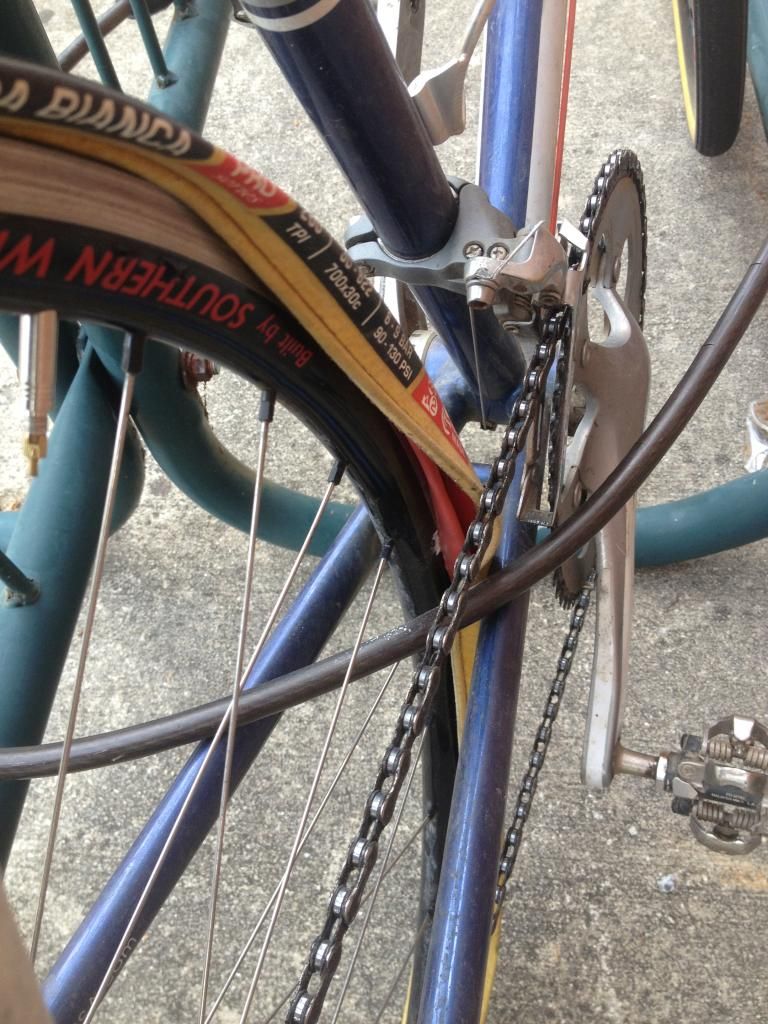There's been a significant amount of discussions lately on several forums about tires blowing off rims.
When it happens during or immediately after a tubed tire change, potential reasons are usually linked to a pinched or faulty inner tube. No surprises here as it has been, is and will be happening for as long as tubes are used.
What is surprising and problematic however are the blow-offs reported to mysteriously happen after the tire/tube have seen lengthy use, the bike is parked and found with the tire blown off. Operator error still is a possibility, specially when latex tubes are used, but considering that some of the people reporting are either seasoned cyclists or in the bicycle business, it makes me wonder what really is going on.
When these type of blow-offs happen the typical reaction is to blame the tire. Blame poor QC, poor bead construction or whatever else and move on to another tire. When tire manufacturers are confronted, the finger tends to point to the direction of the rim manufacturer not manufacturing rims in accordance to standards.
Going over several threads reporting the "inexplicable" blow-offs I notice a pattern developing. A lot of them, if not most, are with the super wide tubeless/tubeless ready rims (inner rim width of 19mm+) when fitted with tires of width that is outside the ETRTO standards.
Meeting ETRTO has caused a lot of controversy in the past as these standards have been regarded as unnecessarily too conservative even from authorities in the bicycle world as renowned as the late Mr. Brown. This is true and countless trouble free miles have been put on 17mm rims with 23mm tires.
What is happening now with the newer developments in rim design, however, I think has really stretched the envelope and pushed us into a new territory. It seems to me that the super wide tubeless/tubeless ready inner rims have exhausted the compliance safety margins between tire and rim and when narrower tires (specially ones with supple walls like the Challenge or Veloflex) are used the potential for the tire blowing off the rim is exaggerated. Maybe its time to start looking at the ETRTO stds more seriously than before when using these setups.
Incidentally, I never had any issue with non-tubeless ready rims up to 17mm inner width and any size tire I used; even below the ETRTO standrds. Anything from 23mm Contis on HED C2 to 32mm Strada Bianca on 23mm Archetype. However I do not feel as comfortable with the newer stuff.
What say you?
When it happens during or immediately after a tubed tire change, potential reasons are usually linked to a pinched or faulty inner tube. No surprises here as it has been, is and will be happening for as long as tubes are used.
What is surprising and problematic however are the blow-offs reported to mysteriously happen after the tire/tube have seen lengthy use, the bike is parked and found with the tire blown off. Operator error still is a possibility, specially when latex tubes are used, but considering that some of the people reporting are either seasoned cyclists or in the bicycle business, it makes me wonder what really is going on.
When these type of blow-offs happen the typical reaction is to blame the tire. Blame poor QC, poor bead construction or whatever else and move on to another tire. When tire manufacturers are confronted, the finger tends to point to the direction of the rim manufacturer not manufacturing rims in accordance to standards.
Going over several threads reporting the "inexplicable" blow-offs I notice a pattern developing. A lot of them, if not most, are with the super wide tubeless/tubeless ready rims (inner rim width of 19mm+) when fitted with tires of width that is outside the ETRTO standards.
Meeting ETRTO has caused a lot of controversy in the past as these standards have been regarded as unnecessarily too conservative even from authorities in the bicycle world as renowned as the late Mr. Brown. This is true and countless trouble free miles have been put on 17mm rims with 23mm tires.
What is happening now with the newer developments in rim design, however, I think has really stretched the envelope and pushed us into a new territory. It seems to me that the super wide tubeless/tubeless ready inner rims have exhausted the compliance safety margins between tire and rim and when narrower tires (specially ones with supple walls like the Challenge or Veloflex) are used the potential for the tire blowing off the rim is exaggerated. Maybe its time to start looking at the ETRTO stds more seriously than before when using these setups.
Incidentally, I never had any issue with non-tubeless ready rims up to 17mm inner width and any size tire I used; even below the ETRTO standrds. Anything from 23mm Contis on HED C2 to 32mm Strada Bianca on 23mm Archetype. However I do not feel as comfortable with the newer stuff.
What say you?








